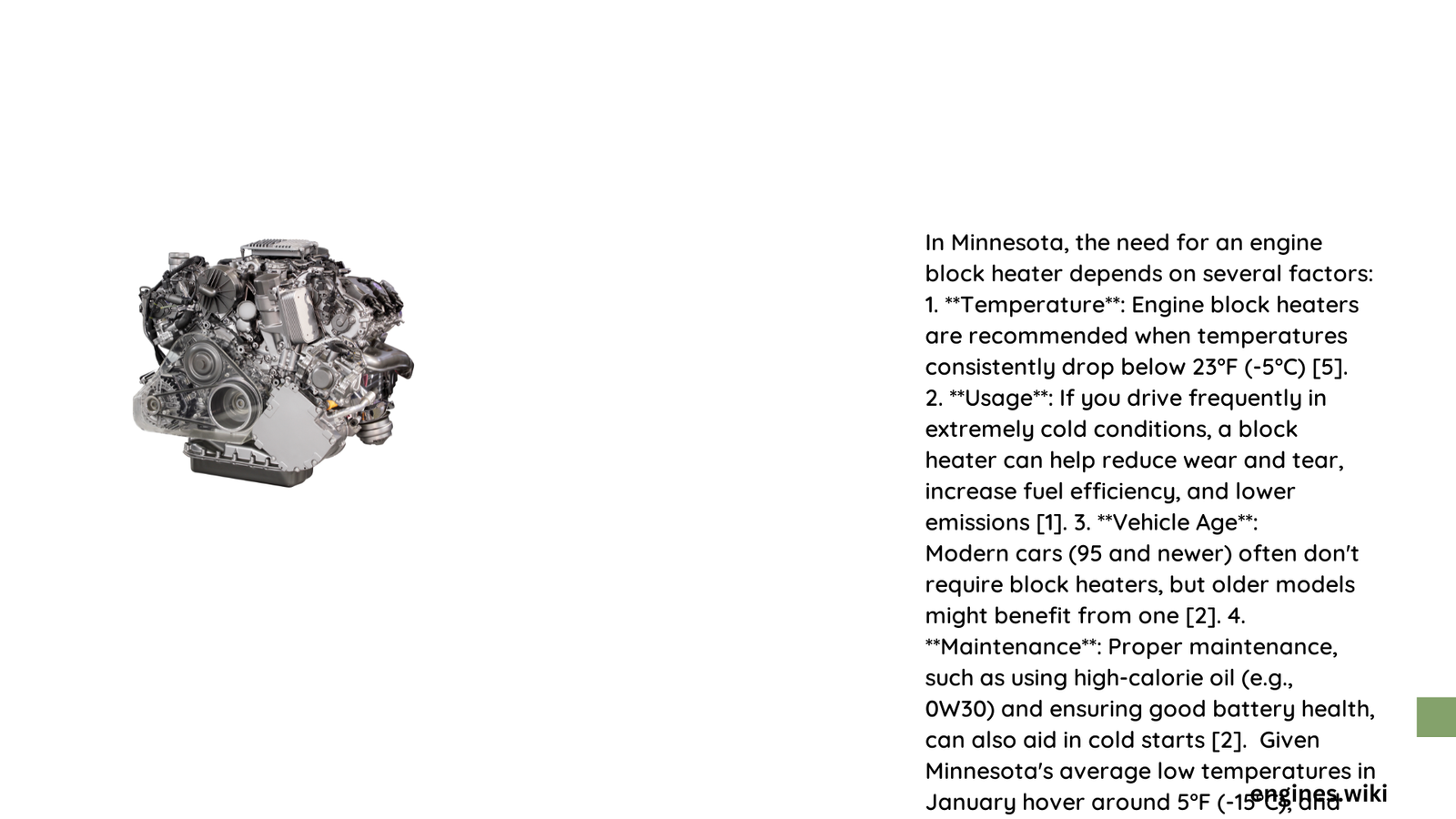Minnesota’s brutal winter temperatures pose significant challenges for vehicle owners, making engine block heaters not just a luxury, but often a necessity. With average winter lows plummeting to 5°F (-15°C) and wind chills creating even more extreme conditions, protecting your vehicle’s engine becomes critical for reliable transportation and long-term mechanical health.
Why Do Minnesota Drivers Need Engine Block Heaters?
What Happens to Engines in Extreme Cold?
When temperatures drop below freezing, vehicle engines face multiple challenges:
- Oil Viscosity: Motor oil becomes thick and sluggish
- Battery Performance: Reduced electrical output
- Metal Component Stress: Increased friction and potential damage
- Startup Difficulties: Increased strain on engine components
How Cold is Too Cold for Your Engine?
| Temperature Range | Engine Risk Level | Recommended Action |
|---|---|---|
| Above 32°F | Low Risk | No special preparation |
| 32°F to 0°F | Moderate Risk | Consider block heater |
| Below 0°F | High Risk | Strongly recommend block heater |
What Are the Primary Benefits of Engine Block Heaters?
- Faster Engine Warmup
- Reduces time needed for engine to reach optimal operating temperature
-
Minimizes wear and tear during cold starts
-
Improved Fuel Efficiency
- Reduces fuel consumption during initial warmup
-
Potentially saves 10-20% on fuel during cold starts
-
Enhanced Battery Performance
- Provides consistent electrical system support
- Reduces battery strain during extreme temperatures
What Types of Engine Block Heaters Exist?
Dipstick Heaters
- Easy to install
- Affordable option
- Heats engine oil directly
- Best for smaller engines
Coolant Heaters
- Integrated into cooling system
- More comprehensive heating
- Slightly more complex installation
- Ideal for larger engines
Electrical Warming Blankets
- Wrap around engine block
- Portable and flexible
- Simple installation
- Good for temporary solutions
How to Choose the Right Engine Block Heater?
Factors to Consider:
– Vehicle make and model
– Average winter temperatures in your area
– Budget
– Installation complexity
– Personal mechanical skills
What Are Installation Considerations?
| Installation Method | Complexity | Cost | Time Required |
|---|---|---|---|
| DIY Installation | Moderate | $50-$150 | 1-3 hours |
| Professional Installation | Low | $150-$300 | 1-2 hours |
When Should You Use a Block Heater?
- Temperatures consistently below 20°F
- Parking outdoors overnight
- Extended periods of vehicle inactivity
- Driving older or high-mileage vehicles
Maintenance Tips for Block Heaters
- Check electrical connections regularly
- Inspect cord for wear and damage
- Use timer for efficient energy consumption
- Store properly during non-winter months
Final Recommendations

For Minnesota drivers, an engine block heater is not just recommended—it’s almost essential. The combination of extreme cold, prolonged winter seasons, and potential vehicle damage makes these devices a wise investment for automotive longevity and reliable transportation.
Pro Tip: Consult with a local automotive professional to determine the most suitable block heater for your specific vehicle and driving conditions.
Cost vs. Benefit Analysis
While initial investment ranges from $100-$300, potential savings include:
– Reduced engine wear
– Improved fuel efficiency
– Lower maintenance costs
– Increased vehicle reliability
